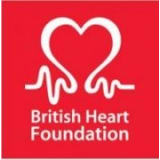The British Heart Foundation provide a quick overview of the key issues for primary care practitioners, managers and commissioners of services. Atrial fibrillation (AF) is the most common sustained adult cardiac arrhythmia. There are currently over 1 million people diagnosed with Atrial Fibrillation in the UK, with many more (25-30%) who are thought to have the condition without it being diagnosed yet.
Prevalence of Atrial Fibrillation
The prevalence of Atrial Fibrillation increases with age to more than 15% in those aged 75 years and over. Atrial Fibrillation increases risk of death, stroke, thromboembolic events, heart failure, vascular dementia, hospitalisations, reduced quality of life and diminished exercise capacity.
Atrial Fibrillation is costly in terms of increased mortality, morbidity and reduced quality of life. Within the UK, it is a condition that is not always managed well, with patients reporting inadequate explanations of their condition and treatment options. Practitioners are working on bettering audits across the UK and additionally, Commissioners are reviewing the quality of management of Atrial Fibrillation.
Audits across the UK confirm that the use of anticoagulation to reduce the risk of AF related stroke is underutilised. Atrial Fibrillation related strokes are more debilitating with those affected being less likely to get back to independent living and less likely to survive.
Symptoms of Atrial Fibrillation
The most common presenting symptoms are palpitations, breathlessness, dizziness and syncope although as many as 25-30% do not have symptoms 10, 5 and therefore, many fail to present for treatment, despite having a greatly elevated risk of stroke.
Resources for Primary Care Managers
The management of Atrial Fibrillation in UK primary care presents a resource challenge that is set to rise as our population ages. The burden on resources comes mainly through referrals and hospital admissions. There is an opportunity to identify potential efficiencies, if strategies to address these issues are incorporated into planning and policy development. The challenge to resources, through treatment of AF, is outweighed by the current challenge on resources that exists in managing preventable Atrial Fibrillation related strokes.
Why is Managing Atrial Fibrillation Important?
Put simply, there is a 1 in 4 life time risk of developing Atrial Fibrillation after the age of 40. Additionally,
- 1/3 of people do not recognise that they have developed Atrial Fibrillation; identifying the need to increase case finding 5-fold increased the risk of Atrial Fibrillation related strokes if left untreated.
- Around 50% of people with an AF-related stroke will not survive beyond 12 months and those that do will suffer increased disability compared to those who have non-AF related strokes.
- 11,600 AF-related strokes could be averted each year if everyone with Atrial Fibrillation received appropriate treatment including anticoagulation.
Billions of pounds are spent each year from health and social care budgets as a result of Atrial Fibrillation and AF-related strokes, plus additional millions in informal care costs and productivity losses (i.e. income lost) due to care, disability and death.
Improving Quality of Care
Practitioners, Commissioners and healthcare professionals alike, need to work towards increasing the frequency of pulse checks; opportunistic case finding for AF (pulse checks) in those aged 65 years and older is cost effective in comparison to relying on patients to present with symptoms. Practitioners should review and target the use of aspirin; aspirin for stroke prophylaxis in Atrial Fibrillation is now not recommended as it does not provide effective stroke risk reduction but increases the risk of major bleeding (including intracranial bleeds).
Adopt an evidence based approach to stroke prevention in Atrial Fibrillation. Addressing fears, held by clinicians and patients alike, regarding bleeding with anticoagulation is of vital importance. Using the evidence based CHA2DS2VASc Score is recommended for stroke risk assessment for those with non valvular Atrial Fibrillation (i.e. AF not secondary to significant valve disease, such as mitral stenosis/regurgitation and aortic stenosis).
- Ensure that anticoagulation is discussed and offered to individuals with a score of 2, and considered for all those with a score of 1, except if they are aged <65 yrs and the point is due to female gender alone.
- Endorse stroke risk prophylaxis regardless of whether the rhythm is Atrial Fibrillation or atrial flutter and whether it is paroxysmal, persistent or permanent.
Promote discussion between prescribers and individuals with Atrial Fibrillation about the choice of anticoagulant. Ensure that those on Non-Vitamin K antagonists, such as Warfarin, have a satisfactory ‘time in treatment range’ (65% minimum). There is good evidence to show that a patient self-monitoring can be more effective in preventing strokes than the healthcare professional in a clinic Self-monitoring of oral anticoagulation: a systematic review and meta-analysis of individual patient data.
Make sure that those with poor time in treatment range are reviewed; NICE guidance highlights that individuals who have a poor time in treatment range with vitamin K antagonists do less well, having more bleeds and strokes due to INR levels being too high (risk of bleeding) or too low (risk of stroke). If their time in treatment range cannot be improved they should be considered for alternative stroke prevention measures.
Improving Management of Patients
Encourage a systematic/audit approach to identify those who remain on anti-platelet therapy, in addition to anticoagulation; in stable vascular disease it has been shown that using anti-platelet therapy in addition to anti-coagulation increases the risk of major bleeding without reducing mortality or myocardial infarction. Some patients may need a short period of time on dual or even triple therapy, (e.g. post coronary stent) their individual risk versus benefit needs to be carefully considered and discussed with them by a specialist. Additionally, promote the use of HAS-BLED Score to assess bleeding risk in patients starting anticoagulation, in order to demonstrate how bleeding risk can be reduced by risk factor modification and monitoring.
We hope this article on Managing Atrial Fibrillation in Primary Care was helpful. For more information please visit the British Heart Foundation CPD Member directory page.













